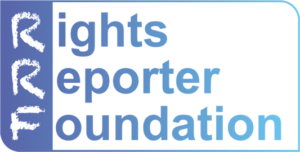News and Films from the Frontline of the War on Drugs
STREET DRUG USE IS A GROWING PROBLEM IN OUR CITIES
Sharing of injecting equipment by people who use drugs leads to infections, such as Hepatitis C or HIV. Discarded needles on the streets are not welcomed by people who live in the area. The solution does not lie in the hands of the police – arresting people who use drugs does not reduce the number of drug users, but pushes them to use in a more risky way, and to discard their needles as soon as possible. The old ways of fighting drug problems don’t work. This is a campaign to find new solutions – to provide room for change.
If we create rooms where drug users can use their drugs with sterile equipment in a supervised environment, we can reduce the risk of overdoses and infections and we can reduce nuisance and drug litter on our streets! The Room for Change campaign aims to promote pragmatic solutions to drug problems - please scroll down to find more information about problems and real solutions that have proved effective in many big cities of the world! If you agree that punishment is not the real solution, please sign our petition!
(This website represents the 2015 state of the campaign)
Open drug scenes – People who inject drugs often live in the margins of society: they have no jobs, home or family. They spend most of their life on the streets, searching for drugs, which they tend to use in dark alleys and doorways, in unhygienic conditions. This causes nuisance in the neighborhood. They share their syringes and needles, which they often drop at the scene in order to avoid police arrest.
Infections – Every third HIV infection outside Sub-Saharan Africa is associated with the sharing of injecting equipment. Another less well-known virus, Hepatitis C, is even more infectious and now spreading among injecting drug users faster than in any other groups. Treating the diseases caused by these viruses costs far more than preventing them by distributing clean injecting equipment and providing a hygienic environment. Photo: Ben art core
New outbreaks of HIV in Europe – For a long time, rates of HIV infection among drug users in most European countries have remained low. This situation is now changing, as a consequence of the financial crisis in Europe. Public health and social services are often the first victims of financial austerity measures. Cities like Athens, Bucharest and Sofia have seen huge outbreaks of HIV infections among people who use drugs. We know, from the example of other countries, that an epidemic does not stop at drug users – it spreads to the general population, through unprotected sex.
Legal highs – In 2009, there was an unprecedented surge in new synthetic drugs in Europe. These drugs, often dubbed ‘legal highs’ by the media, are not on the list of illicit drugs, but they mimic the effects of those drugs. In some cities, such as Budapest and Bucharest, thousands of drug users have started to inject these drugs. While heroin is injected three-four times a day, these drugs are injected 10-15 times a day – leading to a greater risk of infection.
Drug litter – Used needles and syringes, cups, and other drug-related litter are an everyday occurrence in those parts of town where people inject on the street. Although there are still no recorded incidents of a member of the public contracting a bloodborne disease from a discarded needle or syringe, this litter will often generate fear, anger, disgust and frustration.
PUNISHMENT IS NOT THE SOLUTION
More policemen patrolling the streets and arresting people who use drugs will not lead to less drug use, or less litter. On the contrary, fear of the police can drive drug users to discard their needles as soon as possible. There is evidence that restricting access to clean needles will not lead to fewer people using drugs on the streets, but to the sharing of injecting equipment, and therefore, new infections. Overcrowded prisons are a hotbed of injecting drug use and related infections.
THE FOUR PILLAR SOLUTION TO REDUCING DRUG PROBLEMS

Prevention – for those who have not used drugs or are experimenters, we need to provide evidence-based drug education in schools, within families and in dance clubs!

Treatment – for those people who use drugs and wish to stop, we need to provide counselling, detox, therapeutic communities and social reintegration programs.

Harm Reduction – for active drug injectors, we need to provide sterile injecting equipment and a safe environment where they can use drugs without disturbing others, contracting infections or dying of overdose. These programs should serve as entry points to other services!

Law enforcement – to protect communities, the police should keep public places safe, by directing people who use drugs to drug consumption rooms.
This is what we call a four-pillar approach. Each city needs to create its own drug strategy based on these four pillars, appoint drug coordinators, and allocate an adequate budget to implement the strategies. Cities which introduced this approach could achieve great success in reducing street drug use and related harms. The first cities to experiment with this approach were in Switzerland, where the first drug consumption room was introduced in 1986. Several other cities followed their example, in the Netherlands, Germany, Spain, Australia,Canada, Denmark, Luxembourg, and Norway. A drug consumption room was opened in Athens in 2013, and soon Paris and Lisbon will be next. Currently there are more than 90 consumption rooms operating in these countries. While not increasing drug use at all, they have already saved many lives. Not a single fatality has happened on their premises.
More and more cities are realising that punishing people who use drugs just creates more problems – but if we create safe and hygienic environments supervised by health and social care staff, we can reduce overdoses, street drug use with all its nuisance, drug litter, and infections. And, as a bonus, these rooms can also help drug-dependent people get into treatment!
DRUG CONSUMPTION ROOMS
Safer consumption rooms are not a luxury - they are an investment which will benefit the whole of society, not just drug users! In those cities where drug consumption rooms have been introduced
Open drug use has been reduced: Drug users no longer use drugs in dark alleys and parks, but in supervised rooms;
The rate of infections have been reduced: Drug users use sterile equipment and do not share their needles;
More drug users have entered treatment :Drug-dependent people are motivated and able to access treatment programs, and more people will stop their use of drugs;
Drug litter is reduced: Drug litter is safely discarded as dangerous waste in drug consumption rooms, and not a single needle gets out onto our streets;
The number of overdose deaths is reduced: If someone suffers a drug overdose in the room, health professionals can immediately intervene.
Here you can watch Drugreporter's videos about drug consumption rooms!
SOLUTIONS
PARTICIPATING CITIES
Civil society organisations from eight cities are participating in this campaign: Athens, Belgrade, Bratislava, Bucharest, Budapest, Lisbon, Sofia and Warsaw.
ATHENS
Greece is one of the countries which have been hit hardest by the economic crisis in Europe. According to OKANA (the state-run drug treatment agency), injecting drug use rose sharply, as a consequence of growing existential instability among young people. The official estimate is of 25,000 street drug users, most of them living in Athens. The Greek Drug Users’ Union would argue, however, that the actual number of street drug users, in Athens alone, is around 30,000 or more - people who have never made contact with official services, and whose existence has therefore gone unrecorded. For a long time, policy makers thought they could get eliminate the drug problem by means of police raids and imprisonment, while access to treatment, and to clean needles and syringes, remained much lower than in most cities in Western Europe. As a consequence, people regularly shared needles, leading to Hepatitis C and HIV infections. Between 2006 and 2011, there were a total of nine new HIV infection cases among drug users; but in 2011 alone, 256 new cases were registered!
When the huge HIV epidemic hit the country, there was a gradual realisation of the urgent need for a change of approach: the government invested more money in basic harm reduction practices (street-work, rapid tests, prompt connection with Hospital Infection Units providing treatment) while the epidemic demanded even more effective strategies. Many more clean needles were distributed, and more people were admitted to medical treatment facilities; but no shelter for homeless drug users was ever found - nor was any reduction achieved in the waiting-time for substitution treatment. Harm Reduction could also have been strengthened through the involvement of the many drug users in OST treatment who offered to work on a voluntary basis, but whose services were ultimately rejected. During this difficult time, it was Civil Society, not the government, which championed the cause - pressurising key players, creating initiatives to inform people on the street, and committing itself, without reservation, to a more humane, healthy world.
Photo: Ben art core
In 2013, OKANA opened the first drug consumption room in Athens, where hundreds of drug users per month could avoid infection by injecting in a safe environment, instead of shooting up on the streets. The epidemic is now under control – but there is still much to do. Unfortunately, the drug consumption room was closed as a result of legal problems, and people still have to wait years to get into treatment. Civil society organisations are struggling for more prevention, treatment, and harm reduction, and less stigma, exclusion, criminalisation and punishment!
BELGRADE
Belgrade is a city at the crossroads of a number of heroin trafficking routes. It has a significant injecting drug user population, many of them belonging to a marginalised ethnic minority, the Roma. Most of these users live in extreme poverty, segregated from society. Thanks to grants from the Global Fund to Fight AIDS, Tuberculosis and Malaria, several harm reduction services, such as the distribution of clean needles and syringes to prevent infections, were introduced into Serbia during the first decade of this century. HIV infection rates among drug users have so far remained low, but access to harm reduction services is far from adequate – the best indicator of risk being the high prevalence of Hepatitis C infections.
Hopes, on the part of service providers, that programs could be scaled up, seem to be going up in smoke: the country is not eligible for any more money from the Global Fund, and the last grant ended this year. Programs that help drug users now face an uncertain future – some of them will inevitably cease to operate. Neither the national government, nor the local government in Belgrade, are providing adequate funding to reduce the harms of street drug use. Please support the fight by local civil society organisations to push decision-makers to take action based on the four-pillar approach!
Our partner in the campaign from Serbia is Re-Generation. To learn more about he situation in Serbia, watch the movie the Drugreporter produced with Re-Generation.
BRATISLAVA
The injecting use of methamphetamine (known as Pervitin in Slovakia) has been growing in Bratislava in recent years. A great number of injecting drug users belong to the Roma minority - socially marginalised and with poor access to any kind of health services. In some parts of the city, open drug use is a source of disturbance for people living in the neighborhood. People who use drugs often inject in stairwells and bushes, sharing their needles and syringes. Four out of ten are infected with the hepatitis C virus. Photo: Ester Erdelyi Photography - Source: Wikipedia
The injecting use of methamphetamine (known as Pervitin in Slovakia) has been growing in Bratislava in recent years. A great number of injecting drug users belong to the Roma minority - socially marginalised and with poor access to any kind of health services. In some parts of the city, open drug use is a source of disturbance for people living in the neighborhood. People who use drugs often inject in stairwells and bushes, sharing their needles and syringes. Four out of ten are infected with the hepatitis C virus. Photo: Ester Erdelyi Photography - Source: Wikipedia
BUCHAREST
For many years, HIV infections were very rare among injecting drug users in Bucharest. This situation has changed dramatically in recent years, with the number of infections growing from four new HIV cases in 2007, to 801 in the period up to December 31, 2014. Why? Partly because a market boom in new psychoactive stimulants (sold as “ethnobotanicals”) has led to a rapid increase in the number of drug injections: a heroin user injects 4-5 times a day - a stimulant drug user, 10-15 times. The other explanation, is that access to clean needles and syringes has dramatically decreased during the same period, so people have been sharing needles more, and this has led to new infections.
There are harm reduction programs in Romania which aim to prevent the sharing of injecting equipment, and (by extension) bloodborne infections. These programs also help drug users to get into detox and rehab. Most of these programs were funded by the Global Fund – but after the country entered the EU, it ceased to be eligible for GF money. Neither the national government, nor the city council, have provided any money to ensure the sustainability of harm reduction programs, so these services have had to be cut back.
Since 2010, harm reduction funding has fluctuated, allowing providers to continue their work, but also challenging their inventiveness in finding ways to include syringe exchange and opiate substitution services within broader funding, such as European Structural Funding. Even though the effectiveness of harm reduction is widely accepted and recognised by decision-makers, positive statements have not been backed up by financial commitment. This situation leads to interruptions in service provision, as occurred in July 2013 when, confronted with the perspective of temporary closure due to lack of sterile equipment and medication, civil society organisations together with PWID went on a protest, calling for emergency support for harm reduction.
Many drug users live on the street or, in the winter, in the public sewer system, underground, where there is no clean water or provision for hygiene. Drug-related litter and nuisance is a constant source of disturbance for the neighborhood. Civil society organisations are now lobbying to create drug consumption rooms where people would be able to use their drugs under medical supervision, in a hygienic environment, without littering, or disturbing other people. Bucharest needs to create a four-pillar drug strategy and provide support for prevention, treatment and harm reduction, as well as train policemen to cooperate with these services. Please support our petition!
Our partner in the campaign from Romania is the Romanian Harm Reduction Network. To learn more about the situation in Romania, watch the movie the Drugreporter produced with the Romanian Harm Reduction Network.
BUDAPEST
Budapest has seen a major change in the drug market since 2009: Heroin use has declined to almost zero, while thousands of people are injecting new psychoactive substances – synthetic stimulants produced in China and India. These drugs are injected more frequently, 10-15 times a day. Thousands of marginalised drug injectors, many of them Roma, live in slum districts, with no access to health services, and tend to inject in shadowy places, parks and abandoned buildings. Discarded needles are a cause of serious public concern, and the sharing of syringes and needles leads to infections. Between 2011 and 2014, among injecting drug users, the rate of hepatitis C infections almost doubled.
Unfortunately, local decision-makers have failed to recognise the real causes of the problem, and instead blamed needle and syringe programs for increasing street drug use; as a result, two of these programs were closed last year. The solution does not lie in closing down health services which are trying to help people – but in supporting them to create a clean and safe environment where drug users can go, instead of shooting up on the streets. Budapest needs a drug strategy based on prevention, treatment, harm reduction and law enforcement; and in addition, a drug coordinator and a budget to implement the strategy. Please help us change drug policies and sign our petition! To learn more about the situation in Hungary, watch the movie by Drugreporter.
SOFIA
There are thousands of people who inject drugs in Sofia, many of them living in poverty on the outskirts of the town. Many of these drug users belong to marginalised groups of society, such as Roma people, with high levels of unemployment and homelessness. Many drug users inject on the streets, in risky environments with limited access to clean needles and syringes - pharmacies often refuse to serve drug users, and there is just one organisation that provides sterile equipment. Open drug use and drug litter fuels conflicts in the neighborhood, while sensationalist media coverage leads to police raids.
Bulgaria has one of the harshest drug laws in the European Union. In a country of eight million inhabitants, 800 people are imprisoned every year because of drug-related charges. Prisons are not a way of keeping people away of drugs. According to estimates by the prison authorities, more than 20 percent of the prison population are dependent on drugs – and many of them develop problematic use patterns only after being put in prison. Fear from police arrests drives drug users to use in a risky way, and discard their needles as soon as possible.
There are some worrying trends in regard to infections among drug users, with HIV transmissions increasing from 74 cases in 2004 to 157 new cases in 2012, while the hepatitis C infection-rate exceeds 70%. The cost of preventing HIV and hepatitis C is much less than the cost of treating of people who develop HIV. Sofia has no drug strategy, and the city provides no funding for prevention, treatment, or harm reduction. Please help us to urge policy-makers to listen to professional service providers and do what is really needed to reduce the harms of drug use - sign the petition here!
Our partner in the campaign from Bulgaria is the Initiative for Health Foundation. To learn more about the situation in Bulgaria, watch the movie the Drugreporter produced with the Initiative for Health Foundation.
WARSAW
There are an estimated 15,000 people who inject drugs in Poland. Warsaw has an adequate supply of substitution programs, so most of the users who are unable to access such treatment tend to be concentrated in other large cities, such as Katowice or Gdańsk. Source: Wikipedia
Many of these people inject heroin in unsafe places, where the sharing of needles and syringes gives rise to many overdoses and HIV and hepatitis C infections. In some areas of Warsaw, there are conflicts between drug users and other residents, because of unsafely discarded needles and other drug litter. Polish drugs law is harsh, and many young people end up in court because of minor drug offences. The increase in the number of people in prison, however, has not led to any decrease in drug use. The real solution would be to treat those people who are dependent, reducing death and disease with the help of pragmatic interventions, such as the distribution of clean needles and syringes.
Heroin dependence can be treated with the help of opiate substitution treatment - that is, with prescription medication such as methadone and buprenorphine. Unfortunately, only a minority of heroin users have access to medical treatment and sterile needles and syringes. Professional organisations working to reduce the harms of drug use say there is a need for a new legal framework, which would permit the creation of complex treatment units offering a continuum of care - a room for drug users where they can not only inject drug in a sterile, supervised environment, but where they can be motivated to change their lives and integrate into society. Please take action and sign our petition for a safer Warsaw - a city that supports real solutions, not punishment!
Our partner in the campaign from Poland is the Polish Drug Policy Network. To learn more about the situation in Poland, watch the movie the Drugreporter produced with the the Polish Drug Policy Network.
PORTO
Porto saw a huge increase in injecting drug use in the 80s; people were shocked to see young people injecting on the streets, and urged the police to intervene. The criminalisation of people who used drugs did not help, however - resulting instead resulted in a sharp increase in HIV infections and overdose deaths, because drug users had been pushed to the margins of society. The Portuguese government decriminalised drug use in 1999, and adopted a new drug strategy which aimed to provide prevention, treatment, and harm reduction services for drug users. Considerable numbers of heroin users entered treatment, and those who did not want to stop injecting were provided with sterile needles and syringes. This new approach has born fruit, and problems in relation to injecting drug use have decreased.
When the economic crisis hit Portugal, social and health services often fell victim to financial austerity measures. Drug users are not popular – so it is always easy to cut back the funding for services targeting them. But the price of this will be paid by society as a whole, in terms of death, disease, and crime. An investment in prevention, treatment and harm reduction is an investment in the future – making Porto healthier and safer. There are already programs distributing substitution medications and sterile injecting equipment to people who use drugs – the way forward is to create rooms where they can inject in a supervised and hygienic environment, rather than on the streets or in stairwells. We know, from the example of other cities. that these rooms can form the entry point for other services - detox and rehab for example. The legal framework exists in Portugal to allow the creation of drug consumption rooms, but nobody has yet used it. It's time policy makers began to use this framework – please sign our petition and ask them to do so!
Our partner in the campaign from Portugal is APDES. To learn more about the situation in Portugal, watch the movie the Drugreporter produced with APDES.
Articles related to this campaign:
We Need Room for Change!
In Search of a Drug Consumption Room – The Open Veins of Drug Users
ATHEN’S WAY – Struggle For a Drug Consumption Room
Where Do Poles Inject? – The “Room for Change” Campaign in Poland
Why Have the Serbian Media Become Interested in Drug Consumption Rooms?
Advocating for Drug Consumption Rooms in Portugal
Life After the Closure of the Needle Exchange in Budapest
The Room for Change campaign launches a petition among citizens in Sofia
Room for Change: But in Which Direction?




